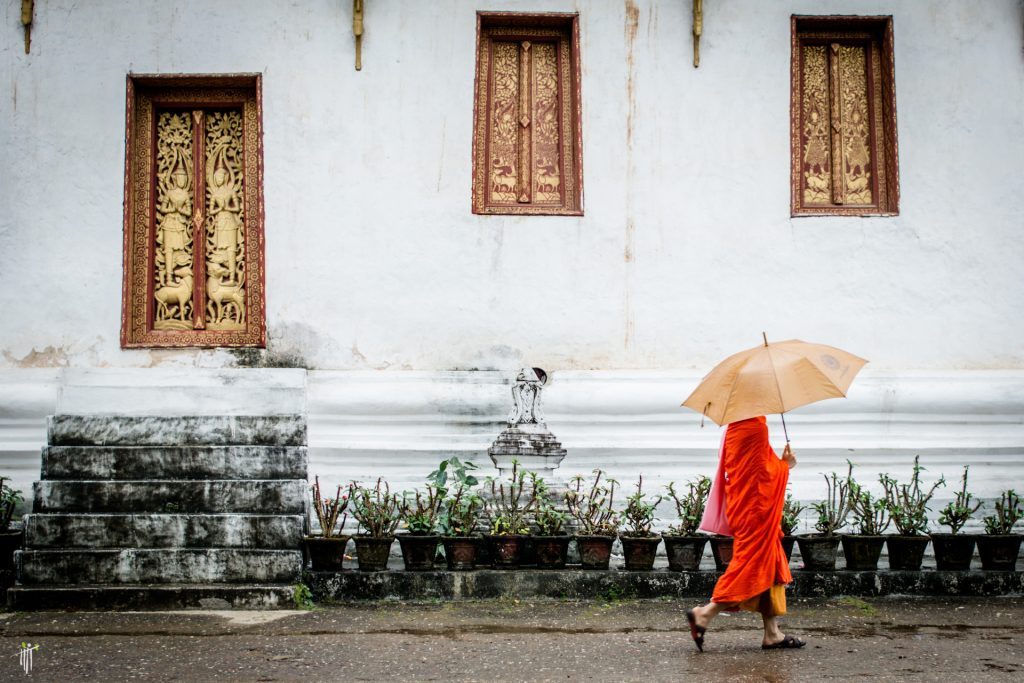Promoting Tourism in the Time of Coronavirus Is a No-Win

The Louvre museum has now reopened. Christophe Ena / AP Photo

The Louvre museum has now reopened. Christophe Ena / AP Photo

Flybe, a UK regional airline, is going out of business, according to reports. Transport Pixels / Flickr

Asia tourism is bracing for more challenging times ahead as the virus spreads outside of Asia. Meanwhile, operators in countries like Laos have been less affected, in part due to scant media coverage of the country. Sasha Popovic / Flickr

Thailand’s legalization of cannabis for medicine purposes could launch marijuana tourism in Southeast Asia.
contentdealer / Adobe
The post How to Become a More Water-Conscious Traveler appeared first on The Blonde Abroad.

As a seasoned traveller, there are a few things that I will absolutely no longer travel without. One of them includes getting appropriate vaccines for wherever I’m travelling to. Not only have I heard too many awful stories about travellers getting sick from preventable diseases, it’s even happened to several of my friends! To ever consider skipping out on my vaccines is just not worth the risk. And since today, February 22nd, is World Encephalitis day (#WED), I thought it would be a perfect time talk about Japanese Encephalitis and why you need to protect yourself from this relatively unknown disease.

Encephalitis is an inflammation of the brain, which is most commonly caused by an infection. The Japanese encephalitis (JE) virus is spread by mosquitos and is the leading cause of vaccine-preventable encephalitis in Asia and the western Pacific. Most human infections are asymptomatic or result in only mild symptoms. However, a small percentage of infected persons develop inflammation of the brain (encephalitis), with symptoms including sudden onset of headache, high fever, disorientation, coma, tremors and convulsions. About 30% of cases are fatal, and there is unfortunately no cure or specific treatment for this disease. Even those who survive can be left with permanent neurologic or psychiatric conditions.

Japanese encephalitis is found in many Asian countries and western Pacific regions, including Southeast Asia which is a very popular destination for travellers (myself included, I love visiting the area!). Anyone can get encephalitis, regardless of age or how healthy they are. The risk for JE is based on destination, duration of travel, season, and activities. There are huge numbers of people travelling to affected areas each year who are completely unaware of this disease.

Whenever you plan a trip, it’s always important to speak with a healthcare professional about all the preventative measures that are recommended for your destination. I usually visit my local travel medical clinic at least 6-8 weeks before I travel anywhere. A short consultation will determine if I need to receive any vaccines, medications, or if there are any other precautions I need to be aware of. Sometimes I don’t need anything, but at least it gives me peace of mind and I won’t have to worry about it during my trip.
If you’d like to know more, you can read the incredible story of how one Canadian family was affected by Japanese encephalitis: https://www.ctvnews.ca/health/death-of-canadiansickened-in-thailand-inspires-daughter-s-vaccine-crusade-1.4299162
Note: This post was sponsored by Valneva. All thoughts and opinions are 100% my own.
Why you need to know about Japanese Encephalitis |Hey Nadine
Singapore is consistently ranked among the top places worldwide to live, work, or study. A recent study by HSBC, a global investment banking company, has found Singapore to be the best country for ex-pats worldwide in terms of career progression, work-life balance, healthcare and the ability to make new friends. About 47% of those who had moved to Singapore for work, the study says, have decided to stay due to the quality of life the country offers them and their families.
A financial hub with countless career opportunities, Singapore remains extremely livable due to the warm tropical climate, lush greenery, developed transport and community infrastructure, and a busy cultural scene. Foreigners account for 1.68 million out of the 5.7 million total population of Singapore. A truly international destination, with English widely used as a common language, the country remains an extremely attractive destination.

In order to stay in Singapore long-term, a permanent residence status is needed. This status offers most of the same rights, privileges, and responsibilities as Singapore citizenship, apart from the ability to vote or hold public office. A permanent residency offers the opportunity to live, work, and retire in Singapore without any time limits, which makes this status highly sort after.
Expectedly, the local government is quite picky when green-lighting PR applications, so there are a lot of hoops to jump through on the way to the coveted residence status. The process is handled by the ICA, the Immigration and Checkpoints Authority of Singapore, and is quite lengthy and effort-intensive.
First, applicants need to compile an extensive set of documents, including a detailed form and a series of relevant supporting documents to confirm all of the numerous ICA eligibility criteria are met.
Hiring an immigration consultant to guide you through this tedious process is key to surviving it with minimum stress. It is important to use a reputable agency that has all the insight and experience, such as the long-running Paul Immigrations. This consultancy firm has successfully helped over 15,000 applicants to date.
They make the application process easy by taking over, handling all aspects, providing you with the proper information you need, ensuring all the mandatory documents are completed properly and submitting the necessary paperwork on your behalf.
With Paul Immigrations’ qualified consultants, the entire process will be done in six simple steps:
Step 1: Call and arrange a phone interview with one of the firm’s consultants. During this conversation, the representative will ask you a series of questions to get your basic information and make sure you’re eligible to apply for permanent resident status.
Step 2: An Immigrations Consultant will schedule an in-person appointment. During this meeting, they will check if you’re holding the correct work permit, and provide you with all the information you need to proceed with the process. Dealing with the ICA closely, the firm’s representatives have all the information on the current political climate and other factors that might influence your chance of success.
Step 3: This is the only step that requires additional effort from your side. You will have to collect all the necessary documents (as indicated by their consultant), including the submission form (Form 4A), compulsory documents as per the ICA requirements and additional materials as needed, such as employer recommendations, materials reflecting your participation in charity work or your involvement with the local community. After handing over all the documents to them, either in person or via email, the hard part is over for you. The rest of the process will be handled by their specialists.
Step 4: The agency’s specialists check to make sure all the documents you have provided meet the ICA criteria and they then complete the rest of the paperwork. Paul Immigrations’ in-house writers will carefully create the important cover letter, based on a questionnaire that you fill out. A thoughtfully composed cover letter makes a world of difference as it highlights the applicant’s involvement in the local community and their commitment to the Singaporean society. It also describes the client’s skills and professional strengths, their participation in local events, and all other factors that would help the applicant stand out from the hundreds of others that the ICA processes on a monthly basis.
Step 5: Once all of the preparation is done, the agency will guide you with the submission of the documents. On average, the process from the first phone call to the completion of the application with them lasts between 1 to 2 months. From this point, you will simply wait for your paperwork to be processed by the ICA, which can take 4-6 months.
Step 6: If your application is successful, Paul Immigrations will advise you on the next steps in order to finalize everything and make it official.
Trusting the specialized consultancy firm takes a significant amount of stress out of the daunting process.
You don’t have to worry about mistakes, as the agency guarantees 100% document accuracy.
The staff writers will craft a thoughtful cover letter to make your application stand out, which is a relief for those of us who dread writing important emails or letters.
The firm’s insight and expertise will give a competitive edge to your Singapore PR application, increasing your chance of success. Besides, if you’re going to make the decision to apply for such status in Singapore, it definitely pays to do it properly.
Obtaining permanent residence status is a major step in creating a wonderful life for yourself in Singapore and enjoying all of the benefits this country has to offer!
The post Paul Immigrations Reviews: The Singapore PR Application Experts appeared first on Wandering Earl.

The other day I received an email from a reader asking me to confirm the proper way to bargain in foreign countries. The ‘proper way’ that was mentioned is something that I’ve heard from travelers all the time.
It’s the 50% rule. And to me, the rule is wrong.
Bargaining is indeed a part of travel. And with more people traveling than ever before, questions about bargaining are on the rise.
In many countries, when you buy certain items, there are often no set prices. It’s just how it works.
As a result, travelers all over the world spend time trying to figure out how much things should actually cost.
But how do we really know how much we should be paying?
Back to that oh-so-common 50% rule.
This rule states that we should always take the starting price that a shopkeeper gives us and try to reduce it by 50%. We will then reach the ‘actual’ price.
However, I’ll tell you exactly why that doesn’t work.
So, if the real price of a silk shawl is $4 but the shopkeeper starts with $30, the 50% rule is way off.
The 50% rule only works if every single shopkeeper automatically doubles the price of an item before you start the bargaining process.
But since shopkeepers start with different prices based on what they think they can get from you in the end, that rule is useless.
If the 50% rule doesn’t work though, what does work?
The advice I give other travelers, which involves the quick method that has always worked best for me, is this:
1. Shop around.
If you see something you want to purchase, visit 2-3 other shops nearby that sell the same thing or something similar. Ask how much it costs at each of the shops. This will give you a general idea of a true starting price for negotiations. If one shop quotes you $50, another quotes $35 and another one quotes you $20, you know the actual price is below $20.
2. Walk away.
Based on the knowledge you gain from Step 1, decide on the price that you think is fair and offer that. If the shopkeeper declines, you can simply thank them and walk away. If your price is indeed too low, the shopkeeper will let you leave. If your price is indeed doable or very close to an acceptable price, they will call you back into the shop and accept or provide one last offer.
This method is quick, efficient and it works every time.
And for those travelers who don’t like to bargain in foreign countries (which makes sense if you’re not used to it), this is an easy way to get a better price without getting too involved in the potentially awkward bargaining process.
Safe travels and happy bargaining!
For more posts about money and travel, check out my Travel Costs category.
The post How to Bargain in Foreign Countries appeared first on Wandering Earl.

The quarantine of the Diamond Princess is among factors driving cruise cancellations and postponements. Princess Cruises

More airlines are launching ultra-long-haul flights, making it easier for travelers to fly nonstop between large cities. Skift
We are glad that you preferred to contact us. Please fill our short form and one of our friendly team members will contact you back.